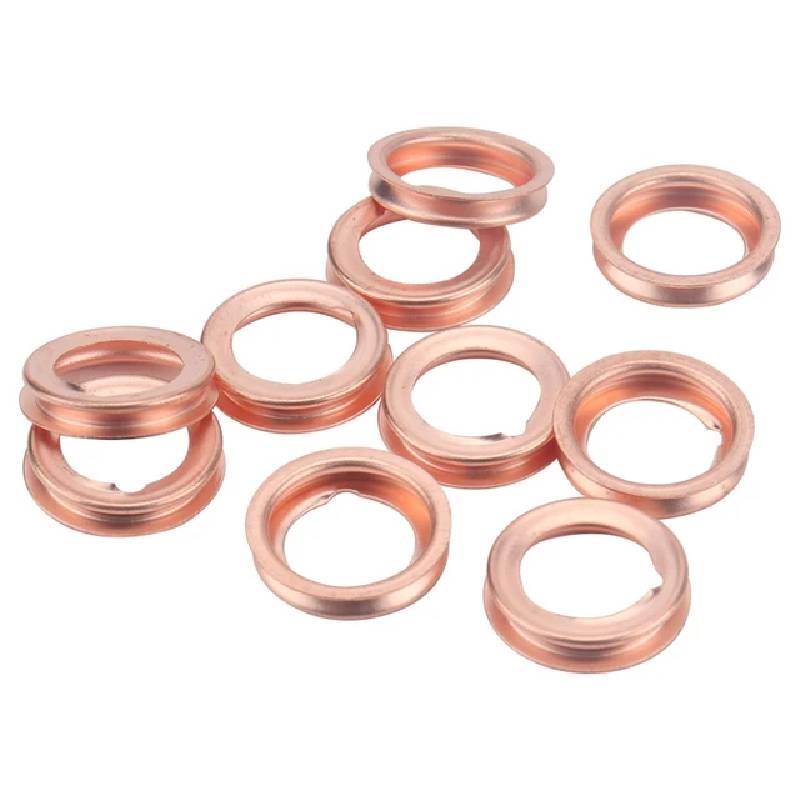4d56 crankshaft oil seal
Understanding the Importance of the 4D56 Crankshaft Oil Seal
The 4D56 engine, a popular diesel engine designed by Mitsubishi, is widely used in a variety of vehicles, particularly in trucks and commercial vehicles. One of the critical components of this engine is the crankshaft oil seal. This small yet vital part plays an essential role in maintaining the engine's efficiency and longevity. In this article, we will explore the functions, types, and maintenance of the 4D56 crankshaft oil seal.
What is a Crankshaft Oil Seal?
The crankshaft oil seal is a specialized component that is installed at the front and rear of the crankshaft. Its primary function is to prevent engine oil from leaking out of the engine while simultaneously keeping contaminants from entering. Oil seals are crucial in maintaining the lubricant effectively within the engine, ensuring that all moving parts are properly lubricated and protected against wear and tear.
Functions of the 4D56 Crankshaft Oil Seal
1. Oil Retention The most prominent function of the oil seal is to contain the engine oil. By preventing leaks, the seal ensures that the engine remains well-lubricated, which is crucial for optimal performance and efficiency.
2. Contamination Prevention The oil seal protects the crankshaft and internal engine components from dust, dirt, and other contaminants that can cause damage. This also helps in maintaining the quality of the engine oil over time.
3. Pressure Maintenance The crankshaft oil seal aids in maintaining the proper oil pressure within the engine. This is essential for ensuring that oil reaches all necessary parts of the engine, especially in high-stress areas like the bearings and camshaft.
4. Vibration Dampening As the engine operates, it generates vibrations. The oil seal helps absorb some of these vibrations, contributing to a smoother running engine.
Types of Crankshaft Oil Seals
4d56 crankshaft oil seal

The 4D56 crankshaft oil seal comes in various designs and materials, each tailored to different operating conditions. Common types include
1. Rubber Oil Seals These are the most commonly used and provide excellent flexibility and sealing capabilities. They are resistant to oil and temperature variations, making them suitable for most internal combustion engines.
2. Metal Reinforced Seals These seals have a metal spring or casing that enhances their sealing ability, providing additional durability and stability, especially in high-performance applications.
3. Composite Seals Some seals are made from composite materials, which combine rubber and other materials to balance flexibility, durability, and chemical resistance.
Maintenance and Replacement
Maintaining the crankshaft oil seal is crucial for preventing oil leaks and ensuring the engine's lifespan. Regular checks for oil leaks, especially around the crankshaft area, can help identify potential issues early. If there are signs of oil leakage, it may be a sign that the oil seal has worn out or been damaged.
Replacing the crankshaft oil seal involves several steps and typically requires disassembling parts of the engine. It’s advisable to consult a professional mechanic to handle the replacement, as improper installation can lead to further leaks and substantial engine damage.
Conclusion
The 4D56 crankshaft oil seal, though small in size, plays a massive role in the engine's overall function and performance. Keeping an eye on this critical component and ensuring it is in good condition can help prevent costly repairs and extend the lifespan of the engine. By understanding the importance and function of the crankshaft oil seal, vehicle owners can make informed decisions about maintenance and repair, ensuring their engines operate smoothly and efficiently for years to come.
-
The Ultimate Guide to Car Repair Kits: Tools and Essentials Every Driver Should Own
News Aug.01,2025
-
The Complete Guide to Oil Pan Gaskets: Sealing Engine Leaks the Right Way
News Aug.01,2025
-
Preventing Oil Leaks: A Complete Guide to Oil Pan Gaskets and Drain Seals
News Aug.01,2025
-
Everything You Need to Know About Oil Pan Gaskets and Drain Plug Seals
News Aug.01,2025
-
Essential for Car Owners: How to Use a Car Repair Kit to Deal with Minor Breakdown
News Aug.01,2025
-
Comprehensive Guide to Engine Oil Sump Gaskets and Related Seals
News Aug.01,2025
-
The Ultimate Guide to Boat Propeller Bearings and Trailer Wheel Bearings
News Jul.31,2025
Products categories















